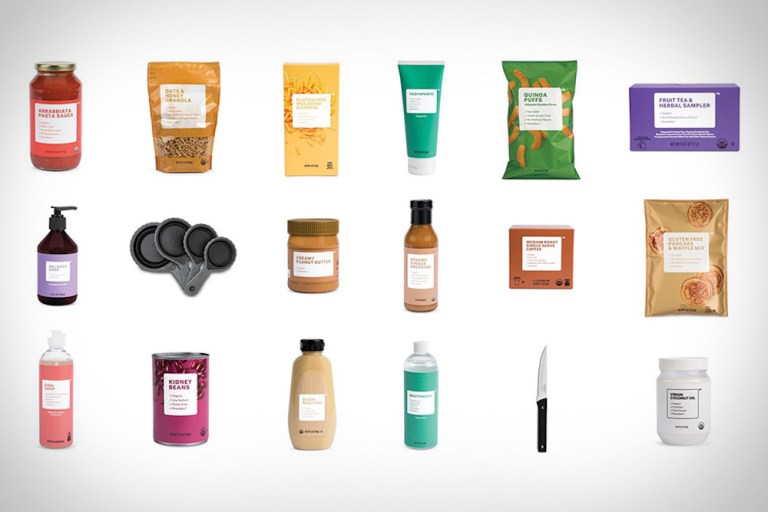Why No Brand May Be The Best Brand

It can’t be easy for a brand that has literally made its name on the notion of brandless-ness, as a pure-play cosmetics supplier. But Brandless thinks it has a good handle on what customers really want.
Who doesn’t love an ironically named collection of shampoos, facial cleansers and body wash — especially when it comes cruelty-free and (according to their marketing) purged of hundreds of “potentially harmful ingredients” like sulfates, phosphates and parabens.
The brandless consumer can even be loyal: Through the B. More rewards program, customers get free shipping on orders above $48 (for a $36-a-year buy-in). Non-members pay a $5 shipping free.
The goods themselves are inexpensive and are meant to align with the emerging trend among consumers who have an increasing interest is spending less on private label goods. Millennials are less brand-loyal than their parents — though they tend to like quality — which means retailers like Brandless that let them tap and access those preferences have discovered a market looking for attention.
The secret to what brandless offers, according to CEO Tina Sharkey, is the company’s elimination of what she calls the “brand tax.” That tax, she noted, encompasses marketing, retailer margins and other expenses that can typically push up prices on brand-name beauty products by as much as 30o percent.
Offering a $3 across-the-board price tag has a somewhat dollar store feel, and its streamline assortment and design recall an era before private label packaging was an exercise in artistic design. That appeal to simplicity, in fact, defines much of the brandless experience (compared to, say, an online commerce rival like Jet.com, which uses a wide variety of technological tricks like shipping delays, or free return ordering or intelligent cart stacking). There aren’t sales either. The price is the price, and the price is $3.
Brandless is betting that variety has it limits, and that the modern customer will reach next for them. There are, in fact, only so many variations on a theme to offer, particularly in cosmetics, before the shopper is overwhelmed and overstimulated and just wants to be done with the experience. Moreover, the streamlined Brandless experience also allows them to slide more easily into a digital commerce world where price competition and power pricing are the name of the game.
And, to be certain, it is an increasingly competitive game, as Amazon has focused on building out and developing its own private label offerings and pushing them across a wide variety of channels under the eCommerce retailer’s control. Most notably (and most recent) is, of course, the recent Whole Foods Market acquisition.
But Brandless, according to retail analysts, is making a move to go after the customer who is specifically focused on price as a concern and who is perhaps less worried about variety than they are about quality for less.
While that isn’t an easy strategy to make work, it is far from an impossible one, and those who make it work find it works pretty impressively. Costco and Walmart, for example, have both made big inroads with such customers — with Costco offering strong product curation so that what the customer sees costs less and is still within the realm of what they actually want.
The challenge, of course, is bringing those customers in at all, since Amazon, Walmart and Costco already exist and have gotten quite good at delivering on pricing as well.
Brandless started out as a pure-play sales sight — that exclusively sold other retailers’ offerings — and found enough demand in the market for affordable private labels that they decided to make a move. Betting one can beat Amazon or Walmart on price consistently is a big risk.
But if they can make it work — and make the brandless shopper into a Brandless shopper — it will be interesting to hear how they did it.